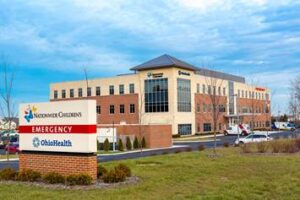Holzer recognizes National Stroke Awareness Month

MIP image.

Holzer recognizes National Stroke Awareness Month
May is Stroke Awareness Month, which began in 1989 to help educate individuals on how to recognize the signs of a stroke and seek help. According to the Centers for Disease Control and Prevention (CDC), stroke kills almost 150,000 of the 860,000 Americans who die of cardiovascular disease annually. But the fact remains that 80 percent of strokes can be prevented by managing risk factors. Learn more about risk factors associated with stroke and begin managing your risk today.
Anyone, regardless of age or gender, can have a stroke at any time. The CDC states that one out of four strokes are reoccurring strokes. Unhealthy habits such as poor diet, using tobacco products, drinking too much alcohol, and not getting enough exercise can contribute to a person experiencing a stroke. High cholesterol, high blood pressure and being obese can also increase a person’s risk of stroke.
Did You Know?
- Stroke is the fifth leading cause of death in the U.S.
- Stroke is a leading cause of adult long-term disability.
- Up to 80% of strokes are preventable.
- Making simple lifestyle changes can dramatically reduce your stroke risk.
- Stroke is an emergency! It’s important to learn stroke warning signs and how to respond to them.Time is an important factor in determining treatment options for stroke.
Stroke symptoms
Symptoms of a stroke may include a sudden severe headache with no known cause, trouble walking, or dizziness. Other symptoms can be easily remembered with the acronym BE FAST (Balance, Eyes, Facial droop, Arm numbness or weakness, Slurred speech, Time).
- Balance: a sudden loss of balance or coordination
- Eyes: loss of vision in one or both eyes
- Facial droop or uneven smile
- Arm numbness or weakness, especially on one side of the body
- Slurred speech – difficulty understanding or listening
- Time – call 911 and get to an emergency department immediately
Holzer Health System is now part of The Ohio State University Wexner Medical Center’s TelestrokeNetwork. Ohio State is the hub for the Telestroke Network, which delivers Ohio State’s critical stroke expertise into 27 hospitals throughout Ohio. Holzer features this collaboration at its Emergency locations in Gallipolis, Jackson, and Pomeroy, Ohio.
As a member of Ohio State’s Telestroke Network, Holzer has access to advanced stroke care specialists at Ohio State’s Comprehensive Stroke Center. The Telestroke Network uses video technology to link Ohio State stroke specialists directly and securely to Holzer providers. Ohio State’s team interviews the patient, views test results and vital signs and prescribes intravenous clot-buster medications to be administered within minutes. Then Ohio State’s stroke specialists work together with Holzer staff to determine the next best step for the patient’s treatment. Acute stroke therapies try to stop a stroke while it is happening by quickly dissolving the blood clot or stopping the bleeding. Patient outcomes improve with early action in treatment and restoring blood flow. Therefore, it’s critical that treatment start as soon as possible. For every hour’s delay in medical treatment, the brain loses 120 million cells.
Holzer Emergency Locations are available 24/7 in Gallipolis, Jackson and Pomeroy, Ohio. For more information on Holzer services, visit www.holzer.org.
This article was submitted by Holzer Health System.









